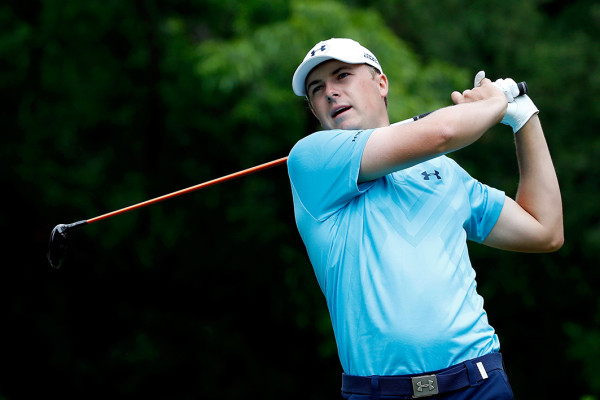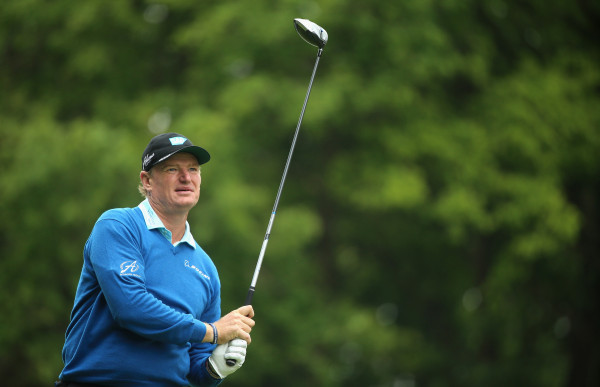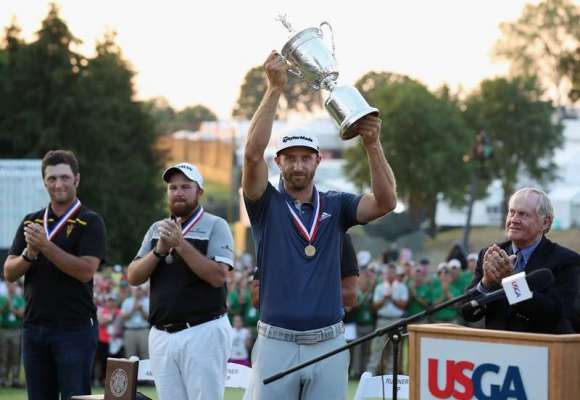Features
Why can no one break the haunting 63 at Majors?
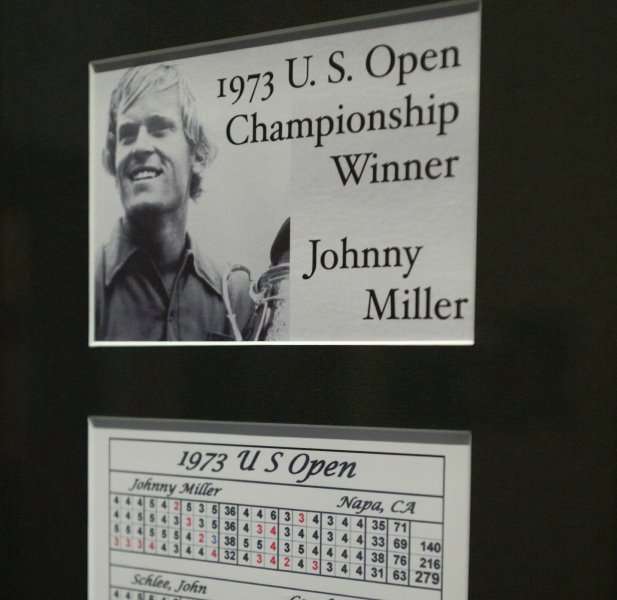
Historic: The scoreboard from Johnny Miller’s 1873 US Open victory (photo by Getty images)
By John Huggan
It has, over the last four decades and more, become one of golf’s strangest and most haunting statistical anomalies. In each of the four Grand Slam events the lowest-ever 18-hole score is the same: 63. And that number has been recorded as many as 27 times by 25 players – Vijay Singh and Greg Norman are the only two men to have achieved the feat twice.
It has been done by the game’s greatest: Jack Nicklaus, Tiger Woods, Nick Price, Nick Faldo, Rory McIlroy, Johnny Miller, Tom Weiskopf, Ray Floyd Gary Player, Jose Maria Olazabal and Payne Stewart are all on the list. But, then again, the likes of Mark Hayes, Jodie Mudd, Michael Bradley, Paul Broadhurst, Steve Stricker, Jason Dufner, Brad Faxon and Hiroshi Iwata have also come close to Major Championship immortality by shooting only one more than the seemingly unattainable 62.
Indeed, weird things have happened over the years to prevent the breaking of the barrier. The examples are many. In the first round of the 1980 US Open at Baltusrol – where the US PGA will return next month – the climax of Nicklaus’ 63 was a missed two-and-a-half foot putt for 62. “I chickened out on that one,” he admitted afterwards.
Earlier that same day, Weiskopf had taken what he assumed would be an outright lead. Only one man – of which more later – had, after all, previously shot 63 in a US Open.
“I drove exceptionally well,” said the 1973 Open champion, who crucially failed to birdie either of the last two holes, both par-5s. “I hit great iron shots and I made every makeable putt. I did everything right. How else do you shoot 63? I can’t do any better than 63. I was very excited playing the 18th. I was walking faster, I know. I wanted to shoot the lowest round in the history of the US Open.”
Weiskopf’s understandable giddiness did not last for long, however. During his post-round Press conference, news of Nicklaus’ identical score was relayed to the tall Ohioan. He visibly blanched. Which may go some way to explaining that his next best score that week was 75. In the end, he trailed home in 37th place.
Hayes had his chance at 62 as well. Eight-under par through the first 17 holes of his second round at Turnberry in 1977, the relatively obscure (at least to British audiences) American drove into sand and eventually missed from six-feet for par and 62.
Nine years later, again at Turnberry, Norman repeated Nicklaus’ feat, this time by three-putting from just under ten-yards on the final green. Remarkably, that closing bogey was the soon-to-be champion’s third of the day. No other 63 has included as many dropped shots.
Three months earlier, Price’s birdie putt from the back-fringe of Augusta National’s 18th green achieved the impossible by apparently going into the hole then jumping back out again, such was the extreme nature of what has to be the ultimate horse-shoe.
“I think,” said Price with a rueful smile, “Bobby Jones held up his hand from somewhere and said, ‘That’s enough boy’.”
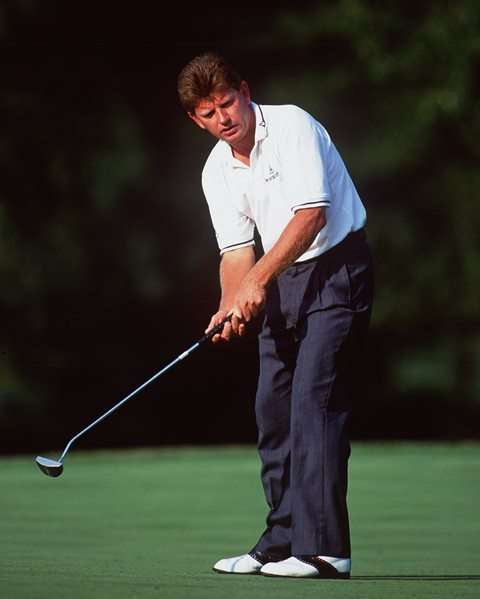
Baffling: Nick Price saw his putt leap in and out of the hole (photo by Getty Images)
And there’s more. When Woods arrived on the final hole of his second round of the 2007 US PGA at Southern Hills, the then world number one was already seven-under par for the day. One more birdie – which would be his ninth of the round – and the by-then mythical 62 would be his. It wasn’t to be. Just as Price’s had done at Augusta, Woods’ ball defied gravity in somehow staying out, despite travelling round just about all of the cup’s 360-degree circumference. It was, as one headline said, “a 62 1/2.”
As ever, Woods was pragmatic and focused through his initial disappointment. Not for him any poetry.
“I hit a good putt and I thought I made it,” he said, two days before he would claim his thirteenth Major Championship. “It would have been nice to have a record and get a three-shot lead going into the weekend.”
Others have had missed chances, and missed them, albeit earlier in their rounds. Singh’s 63 at Olympia Fields in the 2003 US Open was scarred by a three-putt bogey from as close as 15-feet. Faxon missed three times from inside five feet in the last round of the 1995 US PGA. Isao Aoki had three six-footers for birdie at Muirfield in the 1980 Open at Muirfield – and missed them all. And six years ago at St Andrews, McIlroy failed to convert a five-footer for birdie on the Road Hole.
Less auspiciously, Dufner’s ten-foot putt for glory and 62 at Oakland Hills in the 2013 US PGA came up as much as two-feet short. And the putt for 63 wasn’t any prettier. Close to a yip, it only just managed to make the required drop. Given that fact, Dufner’s eventual victory is both unlikely and praiseworthy.
Indeed, only six men have gone on to win the event in which they went so low – Miller (1973 US Open), Nicklaus (1980 US Open), Floyd (1982 US PGA), Norman (1986 Open), Woods (2007 US PGA) and Dufner (2013 US PGA). And it is the last Major of the season that has proved most susceptible to such scoring; 13 of the 27 63s have been shot in the US PGA. Conversely – and perhaps surprisingly – the Masters has proved most resistant; only Price and Norman have shot 63 at Augusta National, the Australian most recently in 1996.
Attempts have been made to rank the 27 in order of difficulty. America’s Golf Digest made an eloquent and mildly persuasive case for the very first, Miller’s 63 at Oakmont in the final round of that 1973 US Open. But that score and round must come with an asterisk. Although some have disputed its significance, a huge storm early that morning had soaked the fearsome Oakmont course, a situation that only exacerbated a greenskeeper’s mistake.
One day earlier, sprinklers left on in error helped turn the previously firm-and-fast conditions into “hit-and-stick”. Okay, only the 65 shot by Lanny Watkins came within five-shots of Miller’s sterling effort on that historic Sunday, but would the Californian have shot the score he did on a normal Oakmont set-up? It says here he would not.
Miller’s score did have repercussions though. One year later, the world of golf was “treated” to what became known as the “Massacre at Winged Foot”. On a course where players – Nicklaus included – found themselves putting off greens so fast they were all but frictionless surfaces and the rough was grown to a point where those walking in it could barely see their shoes, the winning score was seven over-par.
Was this all a reaction to the 63 12 months earlier? Mike Davis, executive director of the United States Golf Association, is at least suspicious.
“Many years after Johnny shot his 63 at Oakmont, I asked PJ Boatwright (the former USGA executive director of rules and competitions) if the very difficult set-up at Winged Foot was a direct reaction to that round,” Davis told Golf Digest. “PJ smiled and said, ‘Well, I can tell you this: After that, we weren’t trying to make the golf courses easier’.”
So if not Miller’s, what is the best of the 27-strong bunch of 63s? At least for this observer, it must be Norman’s at Turnberry in ’86. For one thing, the next best score that day was 67. For another, the Ailsa course had – in what was an unfortunate prelude to Carnoustie 1999 – been all but covered in long grass, only narrow strips of fairway remaining. And for another, the weather was foul. Cold and wet, the conditions must have added at least three shots to the difficulty of the course. It was an amazing round, maybe the best-ever played in a Major Championship.
“I was trying not to leave the first putt short,” said Norman of his three-putts on the 18th green. “I totally misjudged the speed. I was not trying to lag up; I was trying to make it. When I saw at the 17th how close I was, I thought I could shoot 60. At 17 I was too aggressive and at 18 I misjudged the speed. That’s the type of person I am – I always try to shoot the lowest score I can.”
That will also be the case at Oakmont this week, of course. But don’t bet on anyone shooting 63. More likely, the next US Open champion could end up shooting four rounds in the 70s. For now at least, we’re stuck on 27.
Tagged Greg Norman, Johnny Miller, Nick Price, Oakmont, US Open


